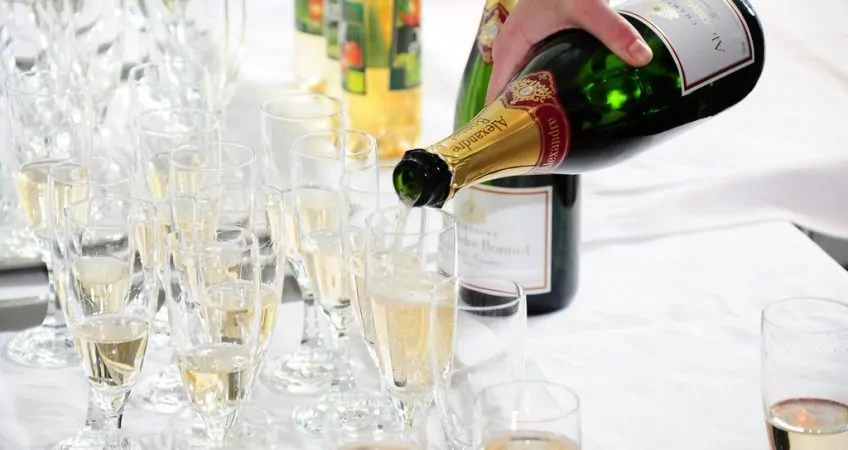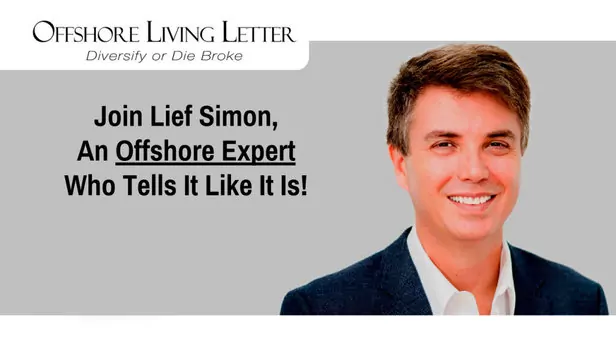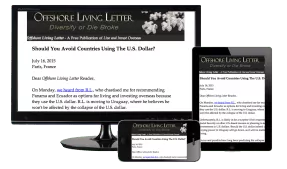
Banking And Champagne Tasting In France
Of French Wine And Bank Accounts
It’s Toussaint (or All Saint’s) break for children in the French school system. Both children in France and those in French schools overseas, including my son Jackson, have two weeks off at the end of October/beginning of November. For us, this works out well. November is a series of independence-affiliated holidays for the Panamanians, so they barely notice if we’re gone from the office this time of year.
Taking advantage of the break, I’ve traveled to France with Kathleen and Jackson to combine some holiday time with a business trip (more on this in a minute). We’re starting with a few days of vacation in Champagne, where, during a tour of the Taittinger caves in Reims yesterday, our guide discussed the process of how they (and others in the champagne trade) remove the sediment out of the bottles.
How Champagne Is Made
Traditionally, the sediment was removed by hand. However, this meant that a fair amount of champagne was lost. As each bottle was opened, the built up effervescence pushed out the sediment but, of course, some of the wine, too. The process was slow and very inefficient.
Then, sometime in the 1970s, someone had the big idea to mechanize the process. Now the neck of each bottle can be frozen to trap the sediment in the ice. When the temporary metal seal is taken away, the built-up pressure pushes out the ice at the neck, all the sediment along with it. Then a machine is used to quickly reseal the bottle, meaning less champagne is lost and more bottles can be processed in less time.
Many small producers still remove sediment by hand, but the big players, including Taittinger, now use machines (except for their high-end production), which has allowed champagne to become affordable to the middle class. In fact, some of the sparkling wine producers in South America and even California are today producing bubbly at prices similar to those for their other wines. And, here in France, you can buy production-level champagne for not much more than the cost of a decent bottle of wine.
Since champagne has become Kathleen’s wine of choice (the tannins from red wine give her a headache, as does white wine for reasons I don’t understand but don’t question too hard), I appreciate being able to buy a drinkable bottle of champagne for less than US$50. In fact, the Concha y Toro sparkling wine we buy most often in Panama still runs less than US$6 a bottle and is better than the Chandon brand out of California, which runs around US$20 in the United States (the Chandon brand made in Argentina is better than its California counterpart but is not as dry as Concha y Toro).
In our experience, we’d say that the best Champagne for value is Nicolas Feuillatte. However, we’re keeping an open mind. We’ll be visiting as many champagne houses as we can over the next few days. I’ll let you know if we find a better value-for-cost option. Of course, if you can buy at the winery, it’s all far more affordable. The reserve bottle of Taittinger we bought yesterday after our cave tour was only 32 euro.
Foreign Exchange For Visitors To France
Driving around the region yesterday, we stumbled across an antique show in Reims. I figured I was safe to say, sure, let’s take a look when Kathleen suggested it. What could she buy that could be transportable back to Panama I figured. In fact, she didn’t buy anything, but I did.
One of the vendors had a collection of antique swords and knives at very reasonable prices. After taking enough time to evaluate the collection that my wife suggested I choose something for her to buy me as a Christmas gift, I remembered that we weren’t carrying much cash with us. I asked if the dealer accepted credit cards, and she did not. “Cash…or cash,” she told me with a smile.
Disappointed, I started to walk away. Then Jackson, more disappointed than I, pulled me down to whisper in my ear, “What about a check?”
And I realized that, when the woman said “cash…or cash,” she was going to suggest a check but, then, recognizing that I wasn’t French, decided to not offer that option.
But I do have a French checking account…for which I happened to have a checkbook in my computer bag out in the rental car (we hadn’t been able to check into our hotel yet).
“Go ask the lady if she’ll accept a French check,” I asked Jackson. He was back in an instant with a big smile. Yes, she would take a local check.
Diversification supports opportunity. I was able to buy a unique baton, the type carried by English military officers in India. The stall owner’s husband was animated in his demonstration of how the baton was used to fend off animals in the jungle. Then he pulled on the knob on the top and out came a sharp blade from the stick scabbard. The blade was used for tigers he assured me as he showed me how an officer might use the weapon as he rode his horse past a dangerous wild animal. (As I said, he was very animated.)
No matter the use, the weapon was the most interesting and affordable of the 20 or so I had considered, and I didn’t have anything like it in my collection. So I wrote the man a check.
I can’t imagine anyone in the United States taking a check at a flea market or antique show, certainly not for the price of this baton. However, in France, they love their checks and prefer them over credit cards. A check doesn’t cost the vendor a fee, as a credit card payment does. And a vendor in France doesn’t worry about accepting a check for payment because French banks are extremely strict about their account-holders bouncing checks. You just don’t write a bad check in this country. The risk is that the bank will close your account. You don’t get a second chance, and it can take years (a friend reports waiting a decade after bouncing a check by accident many years ago) before you’re able to open another French bank account.
Having a great new addition to my sword collection makes the FBAR reporting a little more palatable this week.
Lief Simon
“Lief, you keep pumping Panama but make no mistake, that place is not a safe haven for anyone’s assets. Yes, the real estate crash down there will occur next year, and you’re going to have to deal with it. You have a big financial interest in keeping this going, but I guarantee you, you are already looking for an exit. Probably Uruguay.
“Quit scamming investors!”
C.H.
I write about Panama often because it offers more opportunity across the offshore spectrum right now than any other jurisdiction or market you can name.
People have been predicting a bust in Panama real estate for years. I’ll make a note of your prediction and check in with you again next year.



